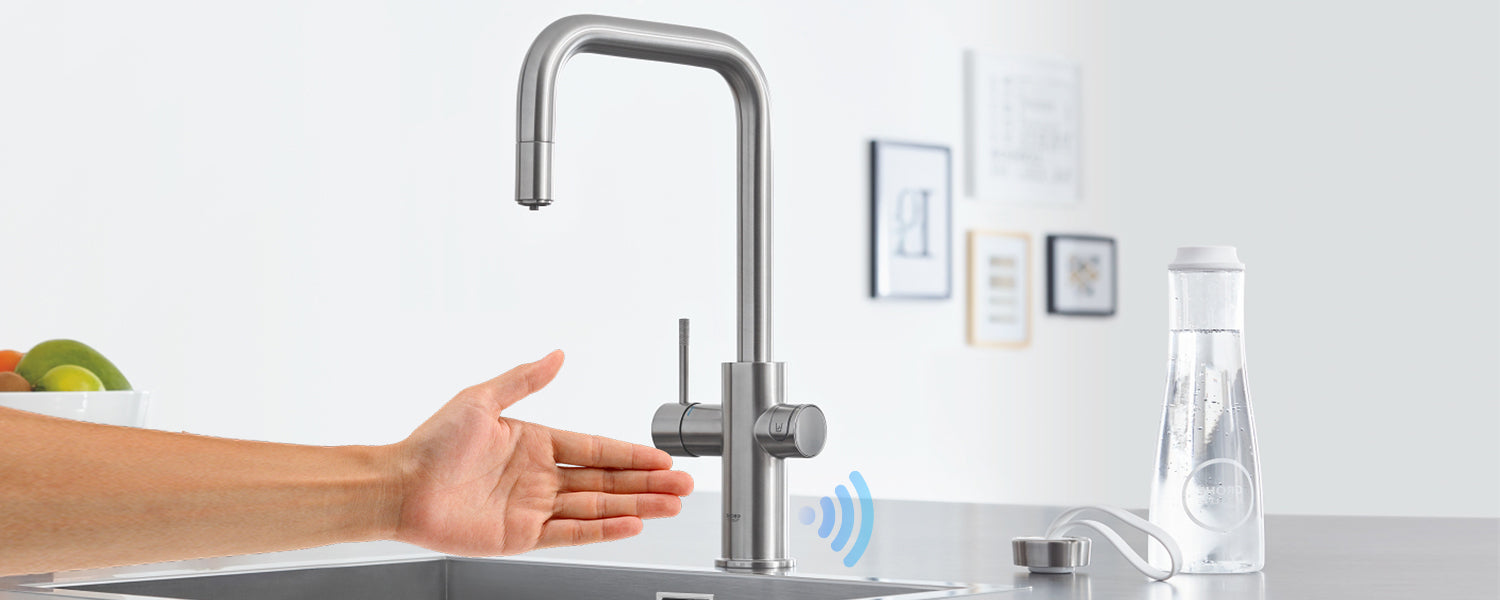
Touchless faucets have become a popular feature in modern kitchens and bathrooms, offering convenience, hygiene, and a sleek, futuristic look. But are they the right choice for your home? For homeowners in Varennes, understanding the pros and cons of touchless faucets can help you make an informed decision about upgrading your plumbing fixtures. At Plombier Varennes, we’ve installed and maintained countless touchless faucets, and we’re here to share our insights. In this article, we’ll explore the advantages and disadvantages of touchless faucets to help you decide if they’re a good fit for your home.
What Are Touchless Faucets?
Touchless faucets, also known as sensor faucets, use motion sensors to detect hand movements and automatically turn the water on and off. They are powered by batteries or electricity and are commonly found in public restrooms, but they’re increasingly popular in residential settings.
Pros of Touchless Faucets
1. Improved Hygiene
Touchless faucets reduce the spread of germs by eliminating the need to touch handles with dirty hands.
Pro Tip: Ideal for homes with young children or individuals with compromised immune systems.
2. Water Efficiency
Many touchless faucets are designed to conserve water by shutting off automatically when not in use.
Pro Tip: Look for models with the WaterSense label to ensure maximum efficiency.
3. Convenience
Hands-free operation makes tasks like washing dishes or filling pots easier and faster.
Pro Tip: Great for busy households or those with mobility issues.
4. Modern Aesthetic
Touchless faucets add a sleek, high-tech look to your kitchen or bathroom.
Pro Tip: Choose a design that complements your home’s decor for a cohesive look.
5. Reduced Wear and Tear
Since there’s no need to turn handles, touchless faucets experience less mechanical wear over time.
Pro Tip: This can extend the lifespan of your faucet and reduce maintenance costs.
Cons of Touchless Faucets
1. Higher Upfront Cost
Touchless faucets are more expensive than traditional models, with prices ranging from $100 to $500 or more.
Pro Tip: Consider the long-term savings on water bills and maintenance when evaluating the cost.
2. Power Requirements
Most touchless faucets require batteries or an electrical connection, which can be inconvenient if the power fails.
Pro Tip: Keep spare batteries on hand to avoid interruptions in use.
3. Sensitivity Issues
Some touchless faucets may have trouble detecting hand movements, especially if the sensor is dirty or poorly calibrated.
Pro Tip: Clean the sensor regularly and choose a model with adjustable sensitivity settings.
4. Complex Installation
Installing a touchless faucet can be more complicated than a traditional faucet, often requiring professional help.
Pro Tip: Contact Plombier Varennes for expert installation and setup.
5. Limited Design Options
While touchless faucets are becoming more stylish, they may not offer the same variety of designs as traditional faucets.
Pro Tip: Shop around to find a model that matches your aesthetic preferences.
When to Choose a Touchless Faucet
Touchless faucets are a great choice if:
- You prioritize hygiene and cleanliness.
- You want to reduce water usage and lower utility bills.
- You’re looking for a modern, high-tech upgrade for your home.
When to Stick with Traditional Faucets
Traditional faucets may be a better option if:
- You’re on a tight budget and prefer a more affordable solution.
- You don’t want to deal with power requirements or battery changes.
- You prefer a wider variety of design options.
Why Professional Installation Matters
Installing a touchless faucet requires precision and expertise to ensure proper function and avoid leaks or malfunctions. At Plombier Varennes, we offer:
- Expert installation to ensure your faucet works perfectly.
- Guidance on choosing the right model for your needs.
- Ongoing maintenance to keep your touchless faucet in top condition.
Conclusion
Touchless faucets offer a range of benefits, from improved hygiene to water efficiency, but they also come with some drawbacks, such as higher costs and power requirements. By weighing the pros and cons, you can decide if a touchless faucet is the right choice for your home. If you’re ready to upgrade or need expert advice, contact Plombier Laval today. Our team is here to provide reliable, professional services to help you make the most of your plumbing system.